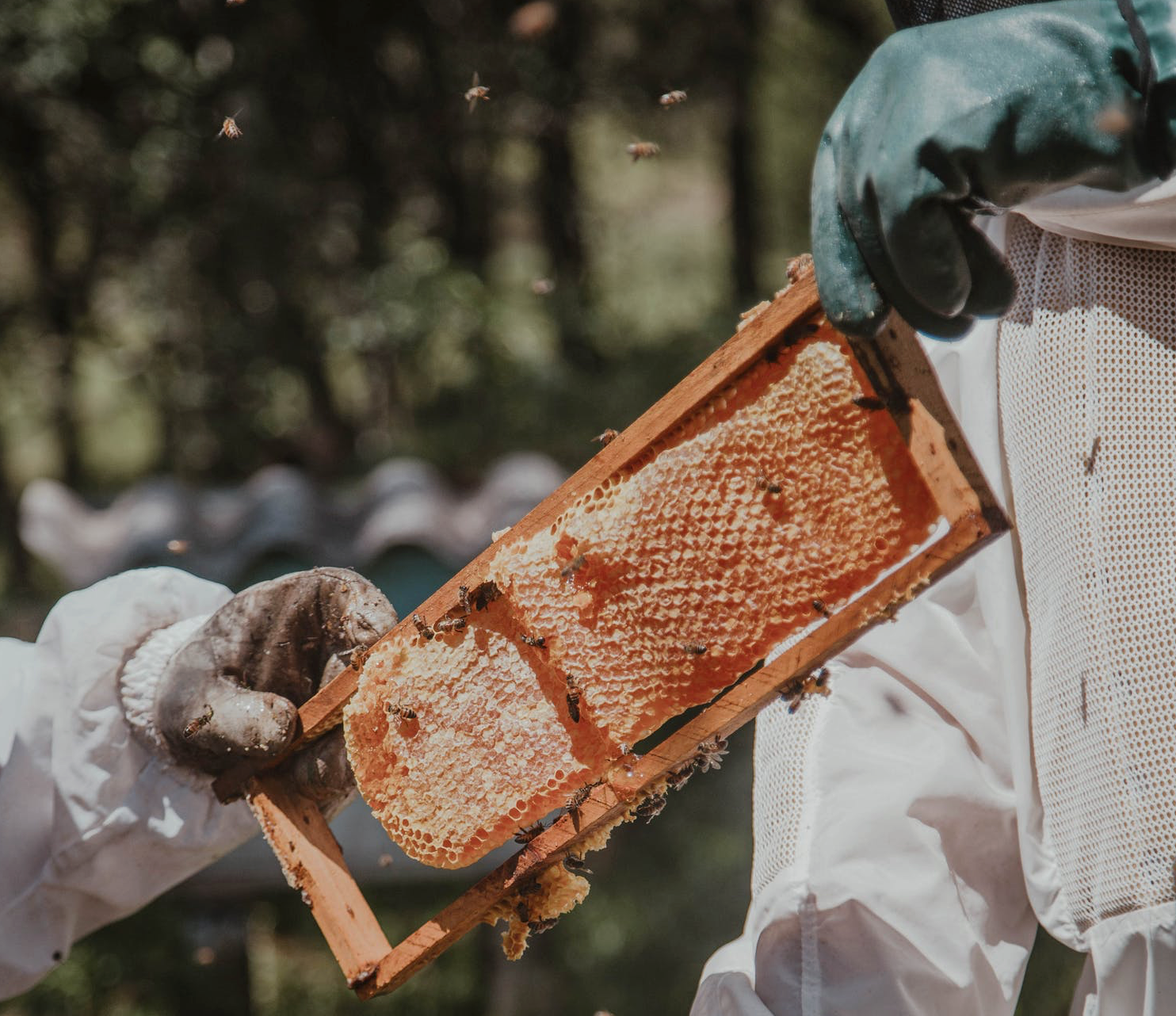
How to Harvest Honey and Honey Harvesting Equipment- Beekeeper's Guide
Sweet Rewards of the Honey Harvest
As an apiarist, you’ve made quite an investment in the equipment and supplies needed to successfully raise bees, especially if this is your first season. With the bees working overtime to take advantage of the early nectar flow, you may have added one or more supers to your hives for the bees’ use.
When these supers fill up, it’s time to extract some of the bees’ honey stores. Extracting honey is easier when the frame’s contents are still warm – it flows a lot more freely; therefore, extract the honey as quickly from the frames as possible after removing them from the hives.
Also, consider collecting the frames when the bees are more likely to be out foraging away from the hive. The afternoon is often best. Lastly, you’ll want to harvest honey from frames that don't contain any brood cells. This last requirement is why many beekeepers include queen excluders in their hives.
There are several methods for harvesting honey. It can be done with or without an extractor. We’ll look first at methods that don’t use an extractor. If this is your first season, you might want to purchase a Honey Harvesting Equipment that contains all the basic supplies you’ll need to extract the honey without the use of an extractor. The deluxe honey harvesting kit contains even more supplies to make the extraction process easier.
Honey Harvesting Equipment Comb
You can completely cut and remove the comb from the frames leaving the cells capped, which allows you to harvest comb honey. Comb honey is cut from comb with fully capped cells that don’t contain any brood cells, as demonstrated in this video.
Just as honey has distinct tastes based on the flowers used by the bees during its production, the comb’s taste is influenced by what the bees use when building it.
Eating the comb and honey together was once the most common way honey was sold and consumed. Eating the comb with the honey has more health benefits than just eating raw honey because the comb contains bee pollen, large amounts of propolis and a natural antibiotic.
Propolis is believed by many to be effective in the treatment of post-surgery mouth pain, genital herpes and cold sores. Comb honey can also be used to make throat lozenges to treat throat irritation and coughs.
Leaving Foundation when Harvesting Honey
You can uncap the comb using an uncapping knife to open the cells of honey while holding the frame over the uncapping tank or a large bucket or tub. A gentle side-to-side sawing motion works well. You can use a scraper to remove much of the honey from the foundation as shown in this video.
The foundation can be reused when this extraction method is used. The honey is strained through material such as food-grade cheesecloth, separating the honey from the wax.
Crush and Strain
You can crush and strain the comb once it has been cut from the frames as demonstrated in this video. The honey is strained through material such as food-grade cheesecloth, separating the honey from the wax. This extraction method destroys the comb, requiring the bees to make new comb from scratch.
Extracting Honey with an Extractor
Extracting honey can be a labor-intensive process. Granted, it’s a labor of love, but still a whole lot of work. Messy too! That’s why many beekeepers choose to use an extractor. Due to the expense, some beekeepers share the cost of the extractor with a group of apiarists and all of them have access to it when they harvest their honey.
Using the Wax
Whether you use an extractor or not, all these methods, except for the harvest of comb honey, provide wax as a by-product. Wax can be used to make candles, lip balms, soaps and many other useful products. Don’t forget, you can also use honey to make mead.
General Questions About Honey Harvesting Equipment
1. When is the best time to harvest honey from my hive?
The best time to harvest honey is typically in late summer or early fall when the bees have had ample time to fill the supers with honey.
2. What equipment do I need to start harvesting honey?
For beginners, a basic honey harvesting kit is recommended, which includes tools like an uncapping knife, a honey extractor (manual or electric), a strainer or cheesecloth, and containers for collecting honey.
3. How do I know which frames to harvest honey from?
You should harvest honey from frames that have fully capped cells and do not contain any brood cells. Using a queen excluder can help ensure that brood cells are not present in the frames intended for honey harvesting.
4. What can I do with the wax produced during honey extraction?
The wax collected during honey extraction can be used for various purposes, such as making candles, lip balms, soaps, and other useful products. It’s a valuable by-product that can enhance the sustainability and profitability of your beekeeping operation.




Leave a comment